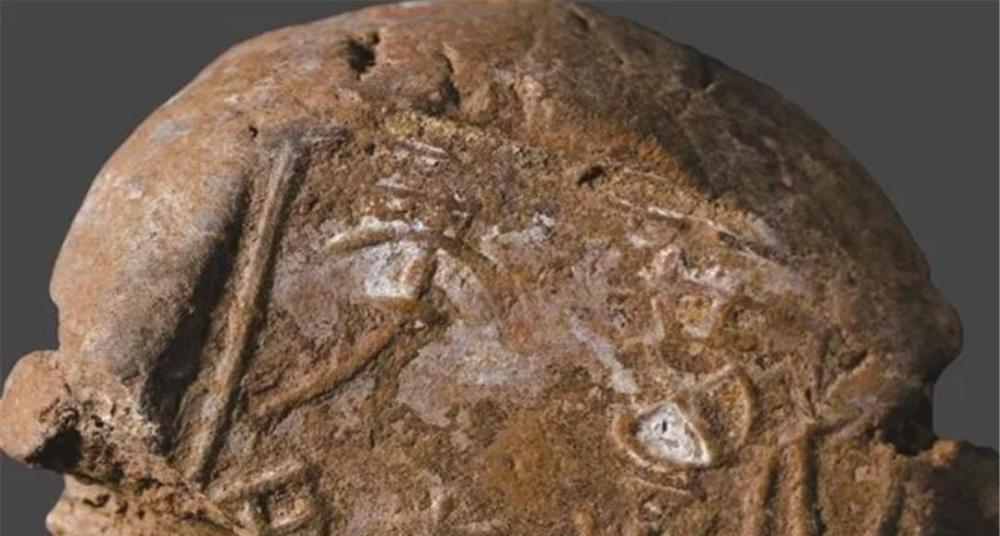The pre-Qin era is at least 2200 years old, and those histories are too long, too far away to be almost legendary, leaving us with too little information to examine; however, in this long period of 1800 years, too many changes have taken place, and human beings have changed from the primitive state of the cave dwelling field to the establishment of a hierarchical social system; human evolution has made great progress; so the study of the history of this period of time is of great significance to our study of the origin of mankind and the law of historical development; 2200 years later, People have accumulated a rich understanding of the civilization of the pre-Qin era, and human beings are getting closer and closer to the source of life; what is going on? Let's take a look!

In 1996, the Shaanxi Provincial Archaeological Team found several pieces of sealing mud from the Warring States period in the northern suburbs of Xi'an; the so-called "sealing mud" is also called "mud sealing"; it is the voucher used by the ancients to seal; that is, a piece of mud is coated on the seal of the utensils, and then stamped with a seal, and the mud is dried; the purpose of sealing mud is to prevent someone from secretly opening it; if the original seal is yin, the words on the sealing mud become Yang script, and it can be clearly seen that the sealing mud found this time is printed with a very beautiful large seal, which is a common font before Qin Shi Huang unified the Six Kingdoms Sealing mud is also an important material for the study of ancient calligraphy.
For example, during the Han Dynasty, more than 300 pieces of sealed mud were found in the tomb of king Chu in Xuzhou, Jiangsu Province, with various official positions of all sizes printed on them; experts found that when the king of Chu died, the noble marquises of various places under the jurisdiction of the Chu state had to make offerings; they sealed the offerings with sealed mud printed with official positions; on the sealed mud of the Warring States period discovered in 1996, there were five seals printed with the word "slave Lu"; experts deduced that this should also be an official position; but what kind of official position was it? Experts have searched through the historical data and have not found that there was such an official position in the pre-Qin era.
Twenty years have passed, in 2017, the Chinese Academy of Social Sciences, the Chinese Archaeological Association and other institutions jointly held an exchange meeting on the study of early Chinese civilization in Beijing; the conference was attended by more than 20 countries around the world; this in-depth discussion of early human civilization is also a summary of the results of the study of pre-Qin culture over the years; at the meeting, experts from Peking University made a detailed report on the "Nulu" seals of the pre-Qin era in Xi'an in 1996; discussed their meaning and nature, and pointed out that the "nulu" in the sealed mud refers to the official office And from the perspective of an ancient script, it should be read as "Ruolu", which is a subordinate official of the Shaofu Province; according to the "Book of Han and the List of Hundred Officials and Secretaries of State": "Ruolu, the official name is also, hiding weapons." "Ruolu was an official position in an ancient prison, mainly in charge of weapons; it was found that this official position first appeared in the Han Dynasty; now it is found that such a small official position already existed in the pre-Qin era, which shows how early the development of mainland civilization is!"
Among them, the "Study of the Early Chinese State ——— Tao Temple Duyi State" by experts from the Chinese Academy of Social Sciences took the site of the Tao Temple as an example and made an in-depth study of the early state ——— the Duyi State of the Longshan Era.
In 1978, in Xiangfen County, Shanxi Province, the archaeological team first discovered the Tao Temple more than 4,000 years ago; after more than thirty years of continuous excavations, the Tao Temple was found around the village, chengyi and Duyi (都城), which already had the framework of an early state; there has been a controversy and inconclusive on the issue of the existence of the Tao Temple; but in the article "Zhong", it is proposed that the tao temple site should be a relic of the Tang Yao culture, but it is worth noting that the tao temple site as a duyi is only in its early and middle periods; it does not run through the whole, to the late, At the same time, it is not the site of Yu Shun's Duyi, nor is it the residence or duyi of the Xia Hou clan; the author proposes a completely new perspective on the early state, which is based on the discovery of new evidence and brings a refreshing feeling to the research work.
For many years, generation after generation of archaeologists and scientific researchers have made continuous efforts and hardships in the process of cracking the code of time; although in time we are gradually moving away from ancient times, but with the development of archaeological scientific research, we are getting closer to that distant era step by step.
[References: "Study of the State of the Early Chinese State ——— the Tao Temple" and "The Table of the Hundred Officials and Secretaries of State of The Book of Han"]